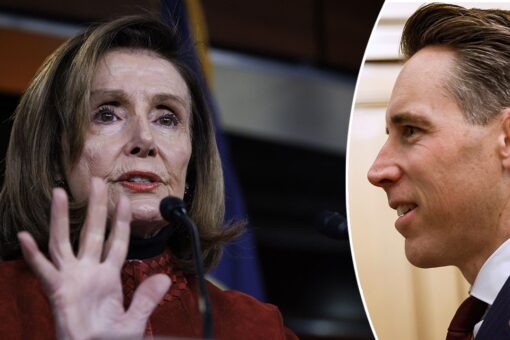Control of the U.S. Senate and House could go directly through Arizona as Democratic Sen. Mark Kelly tries to win a full term after nabbing the last two years of the late Sen. John McCain’s seat in 2018. He faces a rough challenge from Republican Blake Masters. Meanwhile, Republicans buoyed by redistricting are eying two, possibly three House seats now held by Democrats. And Republicans backed by former President Donald Trump — and who back his unfounded claims that he lost because of election fraud — are hoping to nab the governor’s office, secretary of state and attorney general. Democratic candidates for those offices are campaigning on abortion rights and pushing back hard against the election denialism that GOP candidates have embraced.
Here’s a look at what to expect on election night:
Election Night
Polls close at 7 p.m. local time (9 p.m. ET).
OFFICIALS WARN OF MIDTERM POLLING SITE INTIMIDATION
How Arizona Votes
More than 80% of the state’s voters cast ballots early, either by mail or in person at early voting sites. Some of those mail ballots are dropped off at polling places on Election Day.
Early ballots received up to a few days before Election Day will be counted and released about an hour after polls close; “live” Election Day vote tallies will come in the following hours.
So-called “late-early” votes will wait for tabulation in the coming days, because all require verification that they were signed by valid registered voters before being counted.
GOP candidates, backed by former President Donald Trump, are seeking to control the governor’s seat, attorney general, and secretary of state.
Decision Notes
AP will tabulate more than 60 contested races in the Arizona general election. U.S. Senate, governor, attorney general, secretary of state and the Change Voter ID ballot proposal are of particular national interest. Other statewide races include nine ballot measures plus treasurer, public instruction and corporation commission. U.S. House Districts 1 through 7 are contested (Districts 8 and 9 are uncontested) along with more than 40 state legislative races.
The AP may call a statewide or U.S. House race in which the margin between the top two candidates is 0.5% or less, if we determine the lead is too large for a mandatory recount to change the outcome.
In the 2020 general election, the first results came in just after 8 p.m. local time (10 p.m. ET), with half of all precincts reporting by 10 p.m. local time (12 a.m. ET).
The AP will not call down-ballot races on election night if the margin between the top two candidates is less than 2% or if the leading candidate is within 2% of the 50% runoff threshold. AP will revisit those races later in the week to confirm there aren’t enough outstanding votes left to count that could change the outcome.
FOR THE WIN: CONTROL OF THE SENATE HINGES ON THESE VOLATILE RACES
What Else Should I Know?
Q: What Did We Learn From the Primary?
A: Republicans are no longer embracing early voting as they have in years past, when GOP voters tended to get their mail ballots in earlier than Democrats. Instead, more GOP voters are waiting to drop them off on Election Day at the polls, or opting to vote in person instead. This means early results can flip as later votes are counted.
Q: What’s Changed Since the Pandemic Election of 2020?
A: Not much in this election. Arizona has had early voting for three decades, and that changed little in 2020.
Q: How Long Does Counting Usually Take?
A: Generally, up to and sometimes longer than a week.
Q: What Are the Pitfalls With Early Returns?
A: The earliest returns often don’t clearly show who will ultimately win. Waiting for all the Election Day votes to be counted is often needed to see who won, and it is also common for races to be too close to call until a substantial number of the “late-earlies” are tabulated in the following days.
CLICK HERE TO GET THE FOX NEWS APP
Q: What Happens After Tuesday?
A: County election officials will start verifying and counting the “late-early” ballots, and processing provisional and other ballots that need to be verified. Voters have a week to cure ballots with signatures that don’t match the one on file.
Quotable
“When the president decided he’s going to do something dumb on this and change the rules, that would create a bigger crisis, I told him he was wrong.” — Democratic Sen. Mark Kelly, talking border security during a debate with Republican Blake Masters, highlighting the “independent Arizonan” philosophy that has been key for Democratic wins in the state
Parting Thoughts
A decade of predictions that Arizona would go from deep-red to purple came to pass in 2018 when Kyrsten Sinema won a U.S. Senate seat and again in 2020 when the state’s voters went for Joe Biden over Donald Trump for president and sent a second Democrat, Kelly, to the Senate. Whether those were flukes of timing or personality or a real shift will become more clear after votes from Tuesday’s election are counted.
Republicans are hoping to win across the board on messages about the economy, inflation and border security. Democrats are leaning into the threat to democracy from Republican election deniers and looking to women voters upset about the loss of abortion rights in the state to beat back energized Republicans.




